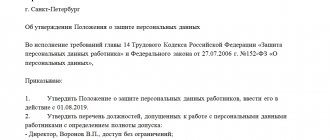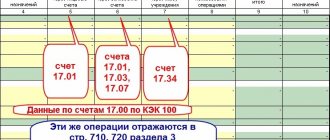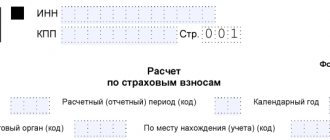Legal provisions establish that employers are required to pay all employees the money they earn at intervals of no more than 15 days. This procedure assumes that, in addition to the main payment for the period worked, employees must also be given an advance.
The Labor Code does not provide clear guidance on the amount of advance payment required, and theoretically, employers must decide this issue themselves.
To solve the problem of calculating an advance payment, you need to understand the procedure for forming this payment and know what the minimum and maximum amounts that the employer must pay are.
Frequency of payment
Each organization sets its own set of rules that apply to all employees. This set of rules is enshrined in local documentation, such as a collective agreement, regulations on wages and bonuses, etc. And although internal relations are regulated between employer and employee, with the participation of the trade union committee, they are primarily based on state legislative norms.
As for the amount and frequency of remuneration, there are clear restrictions, which the employer does not have the right to reduce, but can increase at his own discretion. Regarding the frequency of payments, the Labor Code of the Russian Federation has clear instructions that the interval between cash payments cannot be more than 15 calendar days. But you can make it smaller without any problems. Thus, the management of the organization can initiate payment three times a month or even divide it into weekly payments; such an approach will not be considered a violation.
Legislative regulation
The legislation on the need to charge an advance is stated in Article 136 of the Labor Code of the Russian Federation. It refers solely to the fact that there is a need to divide payments into two times. There is no indication of the size of this or that part.
Meanwhile, both employers and employees have many questions about this. It’s not entirely clear where to start when determining the size. Some consider the amounts for the days actually worked, others simply consider the advance as a certain percentage of the established salary. As practice shows, all methods have supporters and opponents, which leads to the need for legislative regulation.
The Ministry of Labor offers such clarifications in letter No. 14-1/B-725 dated 08/10/17. In 2020, you can safely follow the recommendations of the Ministry of Labor, although they should not be considered a mandatory legislative norm.
https://youtu.be/Dkha-Fb7l7I
How to calculate an advance in 2019-2020 according to the new rules?
The new rules for calculating advance payments, which were recently prescribed in the Labor Code of the Russian Federation, affected mainly only the timing. And when determining the amount of the advance, one should proceed from the time actually worked in the first half of the month (letter of the Ministry of Labor dated August 10, 2017 No. 14-1/B-725).
See also: “Advance payment: how much interest to pay employees, Rostrud explained.”
Moreover, officials recommend taking into account when calculating the advance only those components of the salary that are directly tied to working time (salary, allowances for part-time work, etc.). As for payments, the amount of which can only be determined based on the results of the month (for example, bonuses for fulfilling a plan), then, according to the Ministry of Labor, they should not be used when calculating the advance payment.
For more information about the bonus as a component of remuneration, read the article “Is a bonus part of the salary?”
Let's consider how to calculate an advance in a new way - taking into account the latest clarifications from government bodies.
Example 1
The number of working days in the billing month is 20, the salary of engineer I. I. Petrov is 25,000 rubles. per month. During the first half of the month, Petrov I.I. worked 9 days. Thus, he must be paid an advance in the amount of:
A = 25,000 rub. / 20 days × 9 days = 11,250 rub.
Thus, the new formula for calculating the advance payment takes into account the actual time worked for the period from the 1st to the 15th of the billing month.
This calculation method is very labor-intensive. In fact, this doubles the workload of accounting services involved in payroll calculations. Therefore, in practice, when determining how a salary advance is calculated, it is usually set as a certain percentage of the salary amount.
The Ministry of Health and Social Development, in its letter dated February 25, 2009 No. 22-2-709, recommends issuing wages and advances in comparable amounts. Since personal income tax is not withheld when paying an advance (more on this in the next section), to ensure comparability of payments, the optimal solution would be to set an advance in the amount of 40–45% of the salary.
Let's consider how to correctly calculate the advance payment for this option of calculating it.
Example 2
Petrov I.I.’s salary is 25,000 rubles. per month. The company has established an advance payment amount of 40% of the salary. Petrov I.I. does not use personal income tax deductions. In this case, he must receive an advance in the amount of:
A = 25,000 rub. × 40% = 10,000 rub.
And the salary in the amount:
Z = 25,000 rub. – 25,000 rub. × 13% – 10,000 rub. = 11,750 rub.
It is clear that the example considers the ideal option. In fact, the employee may be absent from the workplace for part of the billing month (due to illness, vacation, etc.). In this case, it is better to calculate the advance based on the time worked.
How to calculate the salary advance in a particular case must be specified in the local regulations of the enterprise.
Concept of advance payments
Let’s define what a salary advance is. Such a concept as an advance payment cannot be found in any article of the Labor Code. In the Labor Code it is prescribed as part of the salary, but it is generally accepted to call the early payment of part of the salary an advance accrual.
An advance is a salary for the first half of the month, which is paid before the billing period comes to an end and final accruals are made.
Most often, employers used the approach of accruing 40% of the salary on the day of the due prepayment. But this approach is not always correct, because wages consist not only of the established salary or tariff rate, but also increasing factors, additional payments, bonuses, and so on. All these indicators should be taken into account in advance payments.
What payments are not taken into account when calculating the advance payment?
Not all amounts paid by the employer are included in the calculation of the advance. For example, separately from the advance payment the following are charged:
- bonuses;
- vacation pay;
- sick leave;
- child benefits;
- financial assistance and compensation;
- other payments calculated at the end of the month.
When calculating, the amount of salary and various allowances and additional payments should be taken into account (for night work, for combining positions, etc.). Regional coefficients and allowances are also included in the advance payment (letter of the Ministry of Labor of the Russian Federation dated April 18, 2017 No. 11-4/OOG-718).
The days during which the employer retains the employee’s average earnings are always counted separately.
Let's look at how a salary advance is calculated in certain cases.
Amount of salary advance
Before 2020, the advance payment as a percentage of the salary was completely different. Most often it was 40 percent, this ratio was determined by the following calculations:
- Half of the time worked implies 50% payment.
- 10 percent was subtracted from 50% as an approximate amount for taxes.
This generally accepted practice may actually be considered a violation of the law, as was clarified last year by the Ministry of Labor. In accordance with letter of the Ministry of Labor No. 14-1/B-725 dated August 10, 2017, the advance amount must correspond to the time actually worked on the day the money was issued. The calculation must take into account not only the amount of salary or tariff rate, but also other allowances due to the employee in accordance with the employment contract. The advance payment also includes amounts for part-time work, overtime hours worked, and night work.
Some amounts, however, should not be taken into account when calculating this amount. The Ministry of Labor says that the use of regional coefficients in relation to advance payments is fundamentally incorrect. The fact is that regional coefficients are calculated based on the final payment for the period worked and it is incorrect to calculate it earlier. Also, bonus amounts are not included in the interim payment, since a bonus can only be paid upon the completion of a certain period and based on the results of the work performed. The bonus is not a mandatory amount; it may or may not be accrued, and even if it is accrued, the amount is determined on an individual basis.
The Ministry of Labor recommends
Officials declare: the abstracts of the documents are not normative acts or explanations to them, however, the letters set out the official position of the Ministry, therefore, during inspections, inspectors will be guided by it. The main idea contained in the document (No. 14-1/B-725 dated 08/10/17): the advance should be calculated taking into account the actual time worked for the corresponding period.
If an employee receives a salary and additional payments (allowances) of a fixed nature every month, both parts of the salary should be included in the calculation of the advance payment. At the same time, additional payments (allowances), which cannot be taken into account before the full calculation of wages, are not included in the advance payment. For example, an employee combines two positions, the additional payment for the combination is known in advance and is taken into account in the calculation. It is impossible to calculate the bonus until the end of the period and the performance indicators influencing it are identified. It is not included in the advance payment.
Important! Regional coefficients apply only to the full amount of earnings for the month; they are also not included in the advance payment, only in the final calculation for the month (Doc. No. 11-4/OOG-718 dated 04/18/17).
Letter 14-1/OOG-549 dated 05/02/19 generally repeats the provisions previously issued by the Ministry of Labor (payment of wages once every half month, reflection of deadlines in the LNA, payment of an advance in proportion to the time worked, inclusion in the calculation of salary, rates and permanent allowances). At the same time, the document also contains one significant innovation: a ban on the so-called personal income tax reservation when calculating and issuing an advance. Previously, when calculating an advance, the accountant applied a coefficient of 0.87 to it, i.e. reduced the amount by 13% for personal income tax. This is now prohibited as it is considered by officials as discrimination against workers.
Conclusion from the new letter from the Ministry of Labor: regardless of the remuneration system, the employee must be paid the amount actually earned for the first half of the month, and personal income tax must be taken at the final payment for the month, at the end of the month for which wages are calculated.
Example
The salary of accountant Ivanova is 35,000 rubles. In March, from 1 to 15, she acted as a senior accountant with an increase of 25% of his salary. The salary of a senior accountant is 50,000 rubles. According to the calendar of a five-day working week in March, there are 20 working days. Ivanova worked completely for half a month.
Advance on salary: 35,000/20*10= 17,500. Additional payment: 50,000/20*10*25% = 6,250. Total advance accrued: 17,500 + 6,250 = 23,750. The advance payment to accountant Ivanova is 23,750.00 rubles. Personal income tax is not deducted from the advance payment.
Deadline for payment of advance payment and salary
Article 136 of the Labor Code of the Russian Federation states that specific dates for the distribution of funds to employees are established separately by each organization.
Information about payment dates established at enterprises is recorded in:
- collective agreement;
- salary regulations;
- internal labor regulations.
In addition to local regulations, each employee, when concluding an employment relationship, is given this information in the employment contract.
The Labor Code of the Russian Federation does not talk about accrual dates, but only establishes a gap between them of no more than 15 days. But some clarifications on the timing are set out in another document - letter of the Ministry of Labor of Russia No. 14-1/B-911 dated September 21, 2016. It provides restrictions on payments in relation to calendar periods. Salaries at the request of the Ministry of Labor must be transferred on any date, starting from the 1st of the month and ending on the 15th. But the advance payment must fall between the 16th and 30th/31st of each month. It is not recommended to make payments on deadlines, as this is fraught with some complications associated with postponing personal income tax payments.
Advance is what percentage of salary?
The legislation does not contain a direct answer to this question. The size of the advance, for example, is stated in the resolution of the USSR Council of Ministers dated May 23, 1957 No. 566, that its minimum should not be lower than the employee’s tariff rate for the time worked. The Labor Code also has no instructions on how to calculate the advance, what percentage of the salary it should be. The Ministry of Labor of the Russian Federation, in letter No. 14-1/10/B-660 dated 02/03/2016, explained that the employer is not only obliged to pay wages at least twice a month, but must also take into account the time actually worked by the employee when calculating it.
Since there is no legal prohibition on calculating an advance as a percentage of salary, we can conclude that an employer can calculate an advance in the following ways:
- according to the time actually worked by employees (days, hours) for the first half of the month,
- establish what percentage of the salary the advance is, also taking into account the time worked in the calculation. As a rule, the amount is set within 40-50% of the salary, which corresponds to the labor costs of employees for half a month.
The method and methodology of calculation should be fixed in local regulations. In any case, the advance payment will be calculated on the basis of time sheets.
As for the size of the advance, the percentage of the salary for it will not always be equal to 50%, and here’s why: when calculating the advance, the employee’s salary, all kinds of allowances, additional payments, payment for combining positions, for replacing another employee in his absence, etc. are taken into account. d. At the same time, it is hardly possible to take into account bonuses and various bonuses that are accrued at the end of the month or quarter - in this case, the second “salary” part will always be more than the advance.
Payment procedure
The final payment procedure is determined only by the employer himself, taking into account the opinions of the team and the trade union organization. A clear definition of the accrual date is stipulated by law and is prescribed in regulatory documents, which allows employees to plan their expenses. It is also advisable to decide what percentage the advance will be charged monthly. Most often, an organization adopts some strictly regulated value; each employee can determine for himself the amount that he can count on at a specified time.
Labor legislation does not prohibit an employer from paying its staff 50, 60 or 70% of total earnings in advance. But it should be understood that since personal income tax is not calculated from the advance payment, there must be a sufficient amount left to calculate it. In addition, on the day of the main earnings, it is also necessary to transfer some funds.
When calculating advance payments, you need to ensure that there is no unreasonable overpayment. Typically, interim time sheets are provided to accountants so that they can assess the extent to which employees are present at work. If a person is on vacation or sick leave, then the advance is not paid to him or is paid in a reduced amount.
How is an advance calculated as a percentage of salary?
Some employers prefer to set the amount of the advance as a percentage of the salary according to the staffing table. This approach reduces the amount of accrual work, but payments do not take into account actual time worked.
Example
At Vympel LLC, the advance is 40 percent of the salary. Poletaev’s employee has a salary of 28,000 rubles. How the accounting department will determine the advance amount:
28,000 x 40% = 11,200 rub.
Since personal income tax is not withheld from the advance, Poletaev will receive 11,200 rubles in his hands.
However, the State Labor Inspectorate believes that the advance should be calculated based on the actual time of work or taking into account the volume completed (explanation on the official ]]>website of Rostrud]]>).
Payment location
The law establishes that payments are made in the same manner as the basic salary itself.
Typically transfer is carried out in two ways:
- Cash in hand from the organization's cash desk.
- By non-cash method to the bank accounts of employees.
The payment method is also specified in internal regulatory documentation. The place of payment can be either the organization itself, or without a definition, if we are talking about cashing out funds from bank cards.
Not fully worked time
Difficulties with calculating the advance payment arise if a person was sick in the first half of the month, was on vacation, or was absent from work for other reasons. By law, the employer pays only for those days when the person was actually present at work.
The formula for calculating the advance payment in this case will be as follows:
- Standard bonuses are added to the salary, for example, for length of service;
- The resulting amount is divided by the norm of working days in a particular month - this is the average daily income of a citizen;
- The indicator is multiplied by the number of days actually worked from the first to the fifteenth.
The total amount will be equal to the advance payment. Personal income tax is not deducted from it, as it is done from wages.
Documenting
All amounts of money transferred to employees are reflected in special statements, which differ by type of transfer:
- In cash.
- In kind.
- To employees' bank accounts.
When issuing an advance in cash through the cash register, a statement of form T-53 is drawn up or cash and expense orders KO-2 are used. When transferring funds through a bank to personal card accounts, a payslip in form T-49 is used.
There are no actual differences between the processing of basic payments and intermediate payments. Today, all accounting operations are carried out in special computer systems that already have the necessary forms built-in, which are subsequently simply printed and transferred to the cash desk or bank.
The statements list all employees by name and indicate how much money needs to be transferred to them. One of the main differences between the two forms given is the fact that there is a special column for the recipient’s signature; in the case of non-cash transfers, it is not needed.
Issuance of payslips
The Labor Code of the Russian Federation obliges employers to issue pay slips to employees providing complete information on the amounts of accruals and deductions.
The pay slip contains personal information:
- Employee's full name.
- Personnel Number.
- Position and structural unit.
- Month and year for which the calculation is provided.
Next, a special table contains information about:
- Salary amount.
- The amount of additional accrued payments (a separate line for each group).
- Bonus, indicating the percentage and the amount itself.
- Other charges.
And in the other column it is written how much was deducted from income.
Deductions include:
- Withheld personal income tax.
- Alimony payments.
- Loans withheld from wages automatically upon application.
The advance payment is also included in the deduction column, since it was issued against future payments, and upon final settlement it is withheld from the total amount.
Paying taxes on advance
The advance payment is calculated semi-automatically. The accountant does not make calculations on a monthly basis; if there have been no changes in salaries or bonuses, then you can use the previously calculated amount.
For example:
Employee Vorontsov A.T. has a monthly dirty salary of 30,000 rubles. It consists of salary and bonus for category. The organization accepts an advance payment of exactly half of the total income. If an employee worked the first half of the month without absences, then he is given 15,000 rubles as a standard. But if he was sick or took a vacation at his own expense, then the amount should be calculated based on the current situation.
Please note that the example does not include tax calculations. This is not an omission, but a standard situation. The fact is that, according to the law, personal income tax is not calculated from the so-called advance. It only costs the salary to calculate and retain it.
Advance and taxation
According to Russian legislation, income tax is paid by the employer.
He transfers money to the tax service from the citizen’s income after the payment of wages. The payment day is the next after the salary is transferred. Personal income tax is sent once a month.
Based on this, we can conclude that no contribution is paid on the advance payment. And this is true, but accounting when calculating tax uses the total amount of funds provided to the employee, that is, wages plus advance payment.
Thus, since the advance payment is the income of citizens, tax is calculated on it, but this is done not at the time of disbursement of funds, but when transferring the basic salary based on the month worked.
It is important to know! Early sending of tax contributions is unacceptable, since this must be done from the citizen’s income, and not from the company’s funds. Premature payments may not be taken into account, which could result in a fine being imposed on the company.
Article 226 of the Tax Code of the Russian Federation “Features of tax calculation by tax agents. Procedure and deadlines for tax payment by tax agents"
Read also: Liability in bankruptcy
Liability for non-payment
Payment deadlines are set by a specific date, and not by a time range. On the specified date, the money must be transferred to the hired persons, and if this day falls on a weekend or holiday, then payments are made in advance, on the working day preceding the specified date.
The Labor Code obliges the employer, in case of delays in payments, to voluntarily charge a penalty for the entire amount of late payments. The amount of the penalty is determined as 1/150 of the refinancing rate for the entire amount of delay for each day of delay.
In addition, Article 142 of the Labor Code of the Russian Federation provides for administrative liability for employers for such violations.
According to Article 5.27 of the Code of Administrative Offenses of the Russian Federation, violators face:
- From one to five thousand rubles, if the employer is an individual entrepreneur.
- From ten to twenty thousand rubles when imposing liability on officials who are guilty of this delay.
- From thirty to fifty thousand to legal entities.
An employee’s statement that he wishes to receive earnings once a month is not a supporting document and is not taken into account.
The concept of an advance and terms of provision
There is no definition of the term “advance” in the Labor Code; in fact, this is the socially accepted name for the second payment from the salary.
It is established at the legislative level that wages must be provided to employees twice a month. Please note that the interval between payments must be fifteen days. As a general rule, salaries are transferred from the first to the fifteenth day of the month following the billing month. Consequently, the date of transfer of the advance payment is determined on the basis of the transfer of salary. For example, if wages are provided on the fifth, then the advance payment will be issued on the twentieth.
On a note! An advance payment is a part of the salary provided based on time worked in the first half of the month. It does not include bonuses and premiums, but tax is not calculated either.








